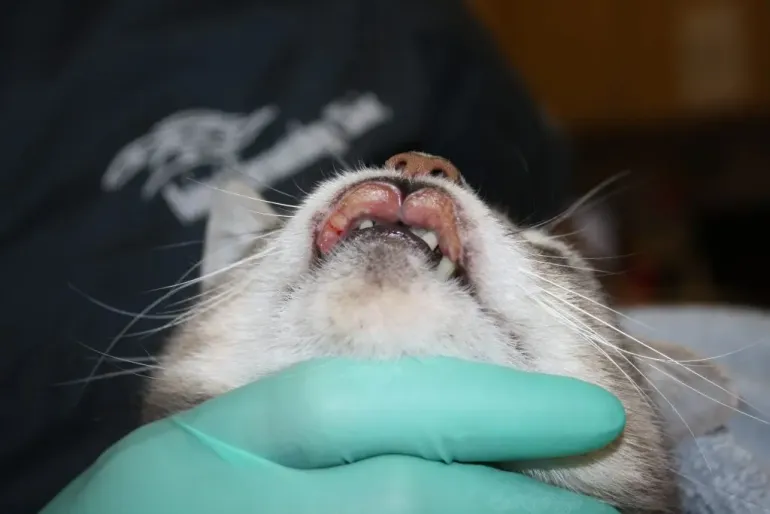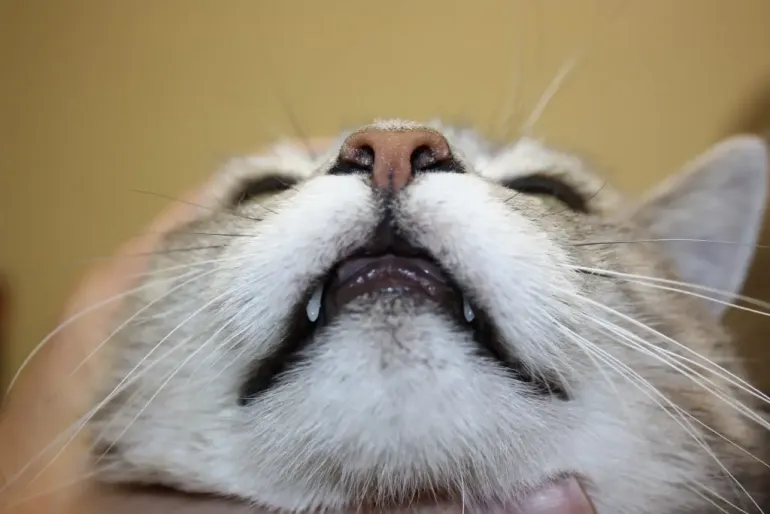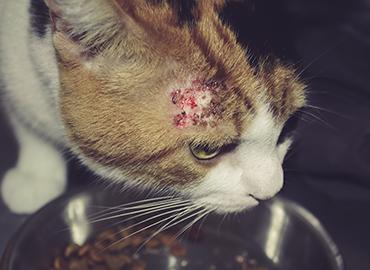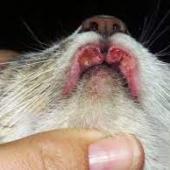A Guide to Feline Allergies: Creating a Comfortable Environment for Your Cat

Cats, beloved members of our families, can suffer from allergies just like humans do. Allergies in cats can lead to discomfort and health issues, affecting their quality of life. Identifying and minimizing exposure to allergens is crucial in managing your feline friend's allergies. This article delves into common cat allergies and provides practical advice on how to help your cat avoid allergens and lead a happy, healthy life.
Cat allergies avoid allergen
The majority of itchy pets require medical attention, which can be costly, time-consuming, and sometimes have adverse repercussions. If a parasite is the source of the itching, it should be treatable. It is generally recommended to consult your veterinarian as soon as possible if your cat is scratching, as itchy skins do not go away on their own. Sadly, allergies cannot be cured by your veterinarian; therefore, cats who have allergies typically require lifelong treatment. The best course of action is to avoid the trigger for the itching; in certain cases, this is all that is required. In other cats, it will help their medical treatment so that you may require less of it, which could result in reduced expenses and less side effects.
What is an allergen?
Allergens are substances that set off an allergic reaction, which is the body's too aggressive immunological response that results in harm.
Pet allergies frequently include flea saliva, pollen, food proteins, and fragments of house dust mites. Less often occurring allergies include cloths, wool, and the dander of other animals (dogs, feathers, and wool).
Common Cat Allergies
-
Flea Allergy Dermatitis (FAD): Flea bites are a common cause of allergic reactions in cats. Regular flea prevention is essential to avoid this allergen. Consult your vet for safe and effective flea prevention methods.
-
Food Allergies: Certain ingredients in cat food, such as beef, fish, or grains, can trigger allergies. Consult your vet to identify the specific allergen and switch to hypoallergenic cat food.
-
Environmental Allergies: Pollen, mold, dust mites, and certain cleaning products can cause allergies in cats. Keep your cat's living area clean, use pet-friendly cleaning products, and consider air purifiers to reduce airborne allergens.
-
Contact Allergies: Cats can be allergic to materials like plastic, rubber, or certain fabrics. Identify and remove these materials from your cat's environment, including their bedding and toys.
-
Atopy: Atopy is an allergic reaction to environmental allergens like pollen and mold. Regular grooming, including brushing your cat's fur, can help remove allergens. Bathing your cat with hypoallergenic cat shampoo can also be beneficial, but consult your vet for the right products and techniques.


Which pets will benefit from allergen avoidance?
For animals suffering from flea allergies, food allergies, or contact allergies, the best and most efficient course of action is to avoid allergens. For pets suffering from allergic conjunctivitis, rhinitis, or atopic dermatitis (atopy), allergen avoidance may be helpful in certain situations.
Avoiding these foods will be helpful if atopic animals have a component of an unfavorable reaction to food allergens. This will lessen the amount of anti-inflammatory medicine needed to control the concurrent atopic dermatitis.
What can generally help to reduce the allergen burden for cats with atopy?
If an animal is kept outside, like in a kennel or cattery, they might not require further care if they are responding to indoor allergens.
Frequent washing helps to regulate the skin of cats with atopic dermatitis by eliminating allergens from the skin.
For eliminating allergens from the home, air conditioning and filtration systems work best. Dehumidifiers can lessen the formation of mold and mites in moist locations. Additionally, lowering allergen levels can be achieved by routine dusting and vacuuming as well as recurring steam cleaning of carpets.
How can I reduce exposure to house dust mites?
The main sources of house dust mites are carpets, mattresses, and fabric-upholstered furniture. Indoor heating systems may also contribute to the aerolization of debris and mites. House dust mite removal is challenging, but the following tips might be useful:
- Reduce humidity.
- Removing carpets may help but dust is then in direct contct with the cat's skin rather than deep within the pile.
- Increased frequency of cleaning has not demonstrated a lower level of mite activity.
- Wash bedding in hot water (>70°C); clean soft furnishings, bedding and living quarters frequently with damp cloth; place bean bags in the deep freeze to kill and denatur the house dust mites (HDMs); thorough aeration and drying in sunlight will help to kill HDMs. Note house dust mite faeces and dead mites are allergenic.
- Ideally use high efficiency particle air (HEPA) vacuum cleaners or at least ones with dust filters and/or fresh vacuum bags; keep pets out of rooms for 2-3 hours after vacuuming or cleaning; air rooms thoroughly.
- Pets should be prevented from sleeping on furniture or beds; ideally access to upstairs/bedrooms should be prevented entirely.
- Consider removing 'dust-collectors' such as stuffed toys, upholstered furniture, books, newspapers and magazines.
- Frequent grooming.
- Provide plastic baskets and synthetic bedding that can be washed frequently at high temperatures, in uncarpeted, wood, vinyl or tile-floored rooms.
- Sodium borate powder applied to carpet.
- Use hypoallergenic waterproof casings for mattresses and pillows. Place a zippered plastic or HDM proof cover over the pet's bed.
Although the aforementioned actions may lower the quantity of mites, the presence of residual allergens may still result in clinical illness. However, reducing the burden of allergens is essential for long-term care.
How can I reduce exposure to storage mites?
The significance of storage mites is uncertain. They may be associated with atopic dermatitis by cross reacting with house dust mites.
- Check food bags for external damage before purchase.
- Try not to buy more than a 30 day supply of food at a time.
- High quality food will have less particulate debris and may also come in re-sealable bags.
- Store complete dry food in plastic containers wiht a tight-fitting lid, not in open bags or boxes. Do not store food in garages, sheds nor cellars.
- Do not feed dusty remnants of food at the bottom of the container.
- Wash containers in hot (60°C) water and then dry completely before refilling.
- Wipe the pet's mouth and lips after feeding with a damp sponge to remove food particles from the skin.
How can I reduce exposure to pollens?
Millions of pollen grains are produced by wind-pollinated plants per floret. Low humidity and strong winds encourage the spread of pollen.
Light rain at a period of high airborne pollen concentrations might reduce convection and velocity, prolonging local exposure, whereas heavy, sustained rainfall 'cleans the air'.
- Particularly when cutting the grass, keep the animal confined inside.
- Limit your outside activities when there is a high quantity of pollen, especially at dawn and twilight when high counts are predicted.
- Eliminating some trees—like wattles and pin oaks—that produce a lot of pollen may help.
- After being exposed, such as after working out in a field, rinse the allergen off your skin's surface using flowing water.
- Stay clear of grass cuttings and long grass.
- Keep shrubs, etc., away from open windows and doors and keep weeds out of your garden.
How can I reduce exposure to moulds?
Reducing condensation and removing clothes from that area will limit mold exposure because mold allergens are more common in indoor environments with humidity levels above 60%.
- Steer clear of high-humidity locations like the restroom, laundry room, cellar, greenhouse, barn, and so forth.
- Don't have a lot of houseplants.
- Steer clear of grain bins/silos, compost bins, leaf litter, mulches, soil, and decaying logs.
- Eat nothing dusty.
How can I reduce exposure to epithelials (sheep wool, duck/goose/chicken feathers)?

Limit exposure to bedding/carpets/soft furnishings that may contain these animal allergens in households and vehicles.
Tips to Help Your Cat Avoid Allergens
-
Regular Grooming: Brush your cat's fur regularly to remove pollen, dust, and loose hair. Cats groom themselves, but regular brushing can help reduce allergens in their fur.
-
Clean Living Space: Regularly clean your cat's bedding, toys, and litter box. Use pet-safe cleaning products and vacuum your home frequently, especially in areas where your cat spends most of their time.
-
Proper Nutrition: Consult your vet to identify and eliminate allergens from your cat’s diet. Feed your cat high-quality, hypoallergenic cat food that doesn’t contain common allergens.
-
Flea Prevention: Use vet-recommended flea prevention products to avoid flea bites and allergic reactions. Regularly check your cat for signs of fleas and ticks.
-
Allergen-Free Zone: Create a safe space in your home where your cat can retreat to, especially during high-allergy seasons. Use air purifiers to reduce airborne allergens.
-
Regular Vet Visits: Schedule regular check-ups with your vet. They can help identify specific allergens and recommend appropriate treatments or medications to manage allergies.
-
Monitor Symptoms: Keep an eye out for symptoms like excessive scratching, redness, ear infections, or gastrointestinal issues. If you notice any of these signs, consult your vet promptly.
-
Allergy Testing: In severe cases, your vet might recommend allergy testing to identify specific allergens. This can help you take targeted steps to eliminate or minimize exposure to these triggers.
Conclusion
Caring for a cat with allergies requires dedication and attention to detail. By following these tips and working closely with your veterinarian, you can create a comfortable and allergen-free environment for your feline companion. A happy, healthy cat is the best reward for your efforts in ensuring their well-being.




